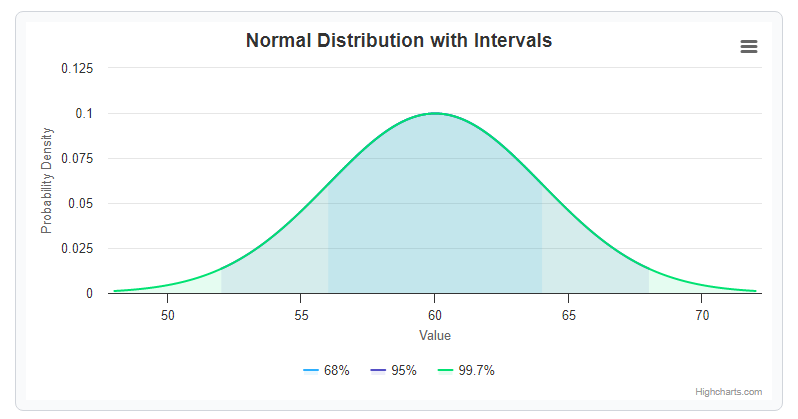Empirical Rule Calculator
Welcome to the Empirical Rule Calculator! This tool helps you understand and visualize the distribution of data using the Empirical Rule, commonly known as the 68-95-99.7 Rule. This statistical principle is particularly useful when dealing with a normal distribution.
Preparation:
Before you begin, make sure you have the following information available:
- The mean (average) of your dataset.
- The standard deviation of your dataset.
If you don't have this information, you may need to calculate them from your dataset. Once you have these values, you're ready to use the Empirical Rule Calculator to gain insights into your data distribution.
What is the Empirical Rule?
The Empirical Rule is a statistical concept that provides valuable insights into the distribution of data in a normal (bell-shaped) distribution. It states that:
- Approximately 68% of the data falls within one standard deviation from the mean.
- About 95% falls within two standard deviations from the mean.
- Almost 99.7% falls within three standard deviations from the mean.
How to Use the Empirical Rule
The Empirical Rule provides a quick and approximate understanding of data distribution in a normal distribution without extensive calculations. Here's a detailed guide on how to effectively use it:
1. Determine the Mean and Standard Deviation:
Start by calculating the mean (μ) and standard deviation (σ) of your dataset. These values are crucial for understanding the central tendency and spread of your data.
2. Identify the Three Intervals:
- Within 1 standard deviation: μ ± σ
- Within 2 standard deviations: μ ± 2σ
- Within 3 standard deviations: μ ± 3σ
These intervals represent the range around the mean within which a significant percentage of your data is expected to fall.
3. Apply the Rule:
- Approximately 68%: This is the percentage of data that falls within 1 standard deviation of the mean.
- About 95%: Look at the interval within 2 standard deviations for the majority of your data, covering a wider range.
- Almost 99.7%: The interval within 3 standard deviations encompasses an even broader spectrum of your data, accounting for nearly all values in a normal distribution.
Understanding these percentages helps you quickly assess the concentration of data around the mean.

How to Use the Calculator:
- Enter the mean (average) and standard deviation of your dataset.
- Click the "Calculate" button to see the distribution intervals, calculation steps, and visualizations.
- Explore the results table, interval chart, and the full distribution chart to grasp the data distribution better.
This calculator dynamically generates step-by-step calculations, allowing you to visualize the intervals and better understand how data is distributed based on the Empirical Rule.
Please note that this tool assumes a normal distribution for the dataset. The Empirical Rule may not be applicable to non-normal distributions.